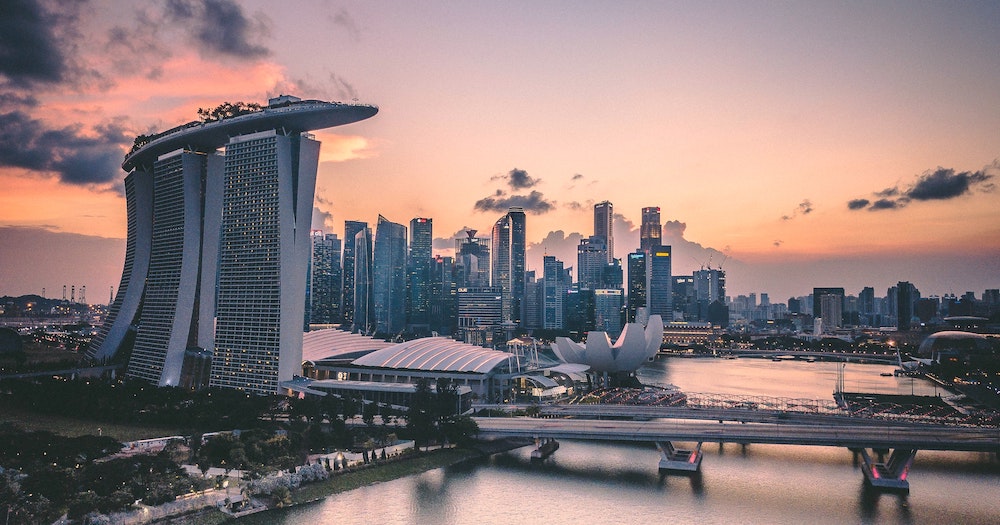Air pollutant levels in Singapore decreased during the circuit breaker period as the global economy slows down due to the Covid-19 pandemic.
The level of nitrogen dioxide (NO2), an air pollutant, dropped by 24 per cent in the first two weeks of the circuit breaker, said the National Environment Agency (NEA).
Air quality during circuit breaker period within WHO's guidelines
Responding to queries from Mothership, NEA said that "just going by the two weeks since the start of the circuit breaker, the daily pollutant levels were within the World Health Organization’s (WHO) air quality guidelines".
Before the Covid-19 pandemic, Singapore met air quality guidelines for NO2 and CO, but did not meet guidelines for PM10, PM2.5, and SO2.
According to NEA, PM comes mainly from vehicles, while SO2 comes mainly from industries, such as oil refineries and power plants.
NO2 levels dropped by 24% during first 2 weeks of circuit breaker
NEA told Mothership that air quality in the two weeks before the circuit breaker, between March 24 and April 6, were already better than the same period in 2019.
Here's how much the average levels of air pollutants dropped in the two weeks leading up to the circuit breaker, as compared to 2019:
- PM10: 21 per cent decrease
- PM2.5: 35 per cent decrease
- Nitrogen Dioxide (NO2): 37 per cent decrease
- Carbon Monoxide (CO): 8 per cent decrease
- Sulphur Dioxide (SO2): 43 per cent decrease
According to a preliminary analysis of the first two weeks of circuit breaker, between April 7 and April 20, there was a further improvement in air quality.
This was seen in the further decrease of the level of NO2, which dropped by another 24 per cent as compared to the two weeks before the circuit breaker measures.
Meanwhile the pollutant levels for the other key primary pollutants, namely PM2.5, PM10, CO and SO2 decreased by less than 1 per cent over the same period.
Reduction in transport-related activities
The improvement in air quality in Singapore could probably be due to the reduction in transport-related activities, with many companies implementing work from home during the circuit breaker, said NEA.
At the same time, the Covid-19 pandemic has led to the slowing down of industrial activities, as well as the slowing down of the global economy.
For the case of NO2 levels, it has most likely decreased due to less emissions from industries and reduced traffic.
Enjoy your clean air while it lasts?
While air quality has improved and has met the WHO standards during the circuit breaker period, this temporary improvement might be gone once circuit breaker measures are relaxed.
According to Lauri Myllyvirta, lead analyst at the Helsinki-based Centre for Research on Energy and Clean Air in National Geographic, clean air can only be achieved in the long-term by moving towards clean energy and transportation.
Myllyvirta said that "ordering people to stay at home at drastic economic cost" is not a long-term solution to achieve cleaner air, but has shown how fast air pollution can be reduced when we reduce the burning of fossil fuels.
For Singapore, NEA has implemented a variety of measures to reduce air pollution from industries and vehicles in the long-term.
These include:
- Tightening of industrial emission standards for new and existing plants from 2015 to 2023
- Introduction of stricter standards for fuel quality and tighter emissions standards for new vehicles
- Incentive schemes to encourage the turnover of older, more pollutive vehicles, and purchase of new and cleaner vehicles
90% of people breathe air with high levels of pollutants: WHO
According to the World Health Organisation (WHO), an estimated seven million people die from air pollution every year.
In addition, nine out of 10 people breathe air that contains high levels of pollutants.
Air pollution impacts human health as it increases the number of deaths due to stroke, chronic lung disease, lung cancer and respiratory infections.
While WHO works with countries to monitor and improve air quality, over 80 per cent of people who reside in urban areas are exposed to air quality levels that exceed WHO guideline limits.
Here are some of the types of air pollutants that are measured in the guidelines:
Nitrogen dioxide (NO2): A reddish-brown pungent gas produced by burning fossil fuels at very high temperatures, such as from industries and vehicles.
Carbon Monoxide (CO): A colourless, non-irritant, odourless and tasteless toxic gas produced by the incomplete combustion of fuels such as wood, petrol, coal, natural gas and kerosene.
Sulphur dioxide (SO2): A colourless and toxic gas mainly produced by oil refineries and power plants.
Particulate matter (PM): Particulate matter is a complex mixture of solid and liquid particles found in the air. This can include sulphates, nitrates, ammonia, sodium chloride, black carbon, mineral dust and water.
Top photos via Swapnil Bapat/Unsplash
If you like what you read, follow us on Facebook, Instagram, Twitter and Telegram to get the latest updates.
